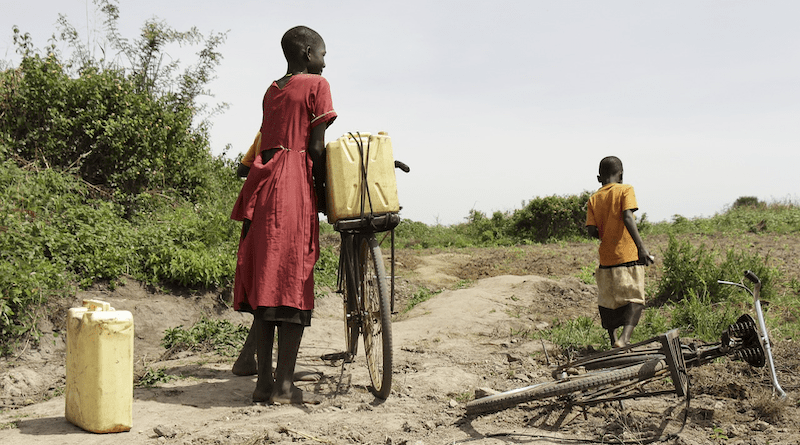Rainy Season Set To Fail In Drought-Hit Horn Of Africa
The Horn of Africa could experience below-normal rainfall during the important rainy season of March to May, with the accompanying hunger crisis requiring urgent aid, according to a report.
These three months alone account for up to 60 per cent of the total annual rainfall recorded in the equatorial parts of Eastern Africa.
The report was released last month (22 February) by the Intergovernmental Authority on Development (IGAD) Climate Prediction and Applications Centre – a climate centre that provides climates services to 11 countries in East Africa.
Drier-than-normal conditions are most likely to continue over drought-affected regions of Ethiopia, Kenya and Somalia, with enhanced likelihood of below normal rainfall expected in parts of Burundi, Rwanda, South Sudan, Tanzania and Uganda, according to the report.
“The report is important because drought is transboundary, and the impacts affect all of us. When drought sets in, people tend to move [to] where conditions are better,” explains Eunice Koech, a climate scientist at the IGAD Climate Prediction and Applications Centre. “Movements can lead to conflicts in cross-border areas and [a] scramble for resources can occur.”
John Recha, a research scientist in climate-smart agriculture and policy at the International Livestock Research Institute in Kenya, tells SciDev.Net: “The implication of the weather forecast points towards depressed rainfalls, hence a likelihood of another failed rain season … [which] means that there is supposed to be more investment through social safety nets programmes that can help people get food.
“There is also a need for forward planning when the rains come by harvesting rainwater to support crop production and livestock keeping.”
Recha calls for proactive collaboration between African countries to help each other benefit through institutions such as the Common Market for Eastern and Southern Africa and the African Union to help tackle climate change, and ensure good stewardship of resources to benefit people and communities.
The Regional Drought Response Plan for the Horn of Africa, released by the World Food Programme (WFP) in January this year, indicates that in areas of Ethiopia, Kenya and Somalia affected by drought, 22 million people suffer acute food insecurity, and 5.1 million children are acutely malnourished.
“In 2023, WFP is urgently calling for US$2.4 billion to help avert a major humanitarian crisis in the Horn of Africa and support 8.8 million people affected by the drought with monthly lifesaving relief,” says the plan. “Responding now is necessary to avert a humanitarian catastrophe, prevent suffering, protect dignity and save lives.”
According to the plan, Somalia is expected to receive 56 per cent of the US$2.4 billion aid, with Kenya and Ethiopia to get 14 per cent and 30 per cent, respectively.
Koech tells SciDev.Net that African governments should work together and share resources and lessons because some countries have better resources including expertise than others to handle the drought situation.
Scovian Lillian is a freelance journalist and a public relations enthusiast with six years of experience in journalism. She is passionate about science, development and human interest issues. She holds a degree in Journalism and mass communication.
This piece was produced by SciDev.Net’s Sub-Saharan Africa English desk.

